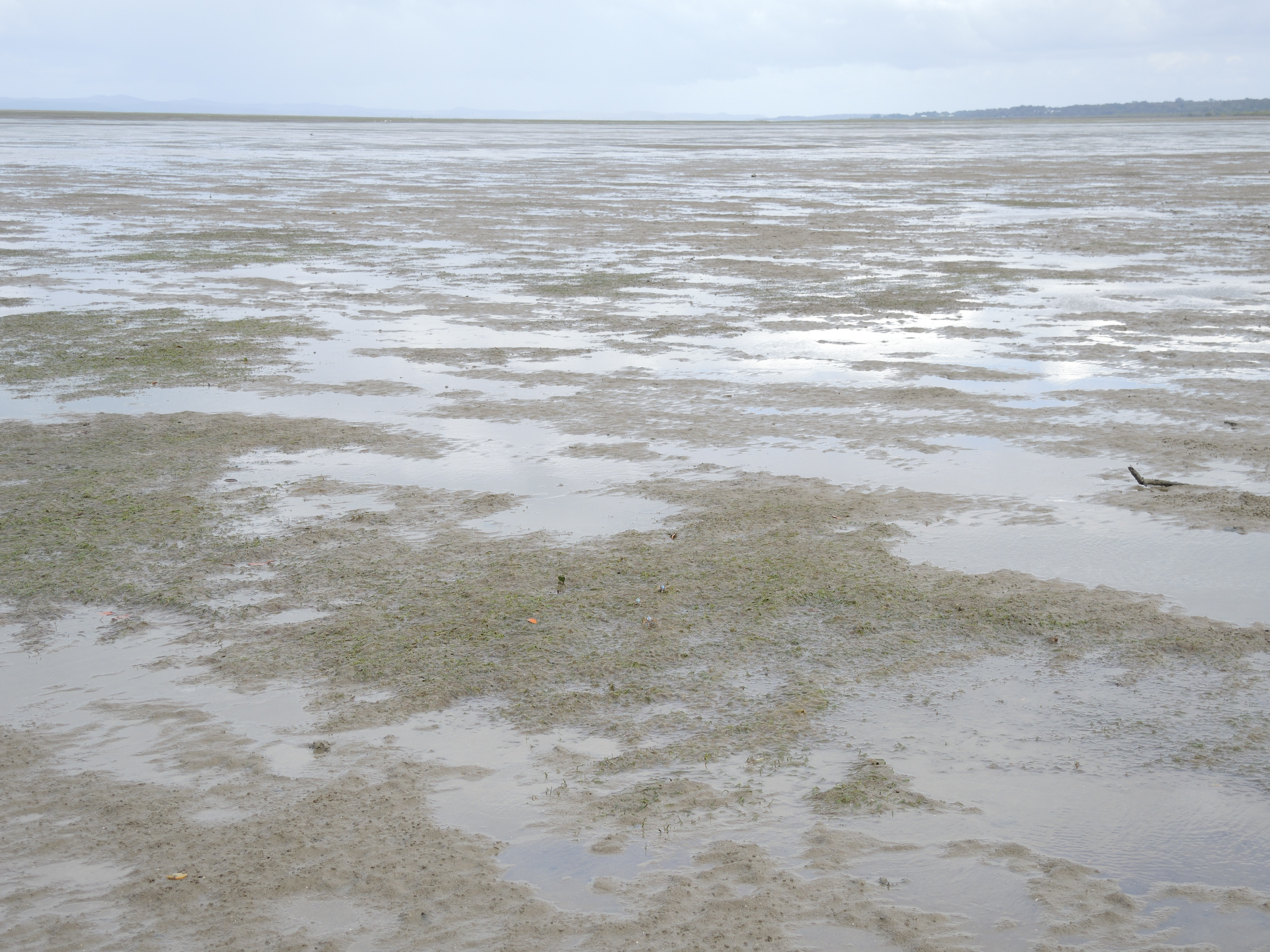|
|
Intertidal unspecified strap seagrassShort descriptionIntertidal seagrass meadows dominated by strap growth forms with unspecified width. Disclaimer: Ecosystem type descriptions are based on biophysical attributes identified in Central Queensland through expert advice and supported by scientific literature. Not all ecosystem types are mapped based on current inventory, and many of the ecosystems described here may also occur in other parts of Queensland.
Classification categoriesSelect from the links below to view related ecosystem type categories Long descriptionIntertidal seagrass meadows dominated by strap growth forms with unspecified width due to the available data and particularly species allocation. Strap seagrasses include Zostera muelleri subsp. capricorni*, Cymodocea rotundata, Cymodocea serrulata, Enhalus acoroides, Halodule pinifolia, Halodule uninervis and Thalassia hemprichii. These meadows can also include seagrasses with other growth forms, such as Halophila spp., Syringodium isoetifolium and Thalassodendron ciliatum. Seagrasses are not a taxonomically unified group, but rather an ecological group that arose through convergent evolution and includes several different families. They are all flowering plants that live underwater and need light to photosynthesise. They also produce seeds. They grow on muds, sands and fine gravels which may be mobile. Meadows may include other structural macrobiota such as encrusting algae, erect macrophyte algae, bryozoans, sponges and molluscs (e.g. bivalves, cockles, whelks, razor clam beds), together with mobile invertebrate fauna, such as sea cucumbers, crabs (e.g. commercial sand crabs and other portunids) and polychaete worms. *Revision of Zostera capricorni has resulted in classification to subspecies. In Queensland, Zostera capricorni has been revised to Zostera muelleri subsp. capricorni[3]. Special valuesSeagrasses provide a wide range of services, including:
The fisheries value of seagrass habitat as nursery grounds for juvenile commercial fish and prawn species in Queensland is well documented[6][9]. For additional special values, see type (15). Diagnostic attributesInundation 'Intertidal – Lower low', 'Intertidal – Mid low', 'Intertidal – Upper low', 'Intertidal – Low undifferentiated', 'Intertidal – Lower medium', 'Intertidal – Upper-medium', 'Intertidal – Medium undifferentiated', 'Intertidal – High', 'Intertidal – Undifferentiated', 'Intertidal – High undifferentiated', although mangroves usually occur at mean sea level and above. Structural macrobiota 'Seagrass – strap width unspecified' QualifiersSeagrass ecosystems vary in Period and Trend (seasonally and from year to year). The species composition, extent and biomass of seagrass meadows can vary seasonally and between years. The extent and biomass of seagrass meadows along the Queensland east coast are typically maximal in late spring and summer, and minimal over winter[1][2][7]. DistributionStrap seagrasses are known to occur in low wave energy areas along Queensland intertidal shorelines, such as within estuaries[10]. The following relates to distribution of this ecosystem type within the Central Queensland mapping area:
CommentsSee type 12 for detailed discussion of relevant attributes. Additional InformationSeagrass - Queensland Government Case study: Hervey Bay seagrass and dugong - Queensland Government Saltmarshes, seagrasses and algae - Queensland Department of Primary Industries Seagrass-Watch: guides and manuals Seagrasses in Queensland (pamphlet) Seagrass - Queensland Government Seagrasses - Australian Institute of Marine Science (AIMS) A Vulnerability Assessment for the Great Barrier Reef - Great Barrier Reef Marine Park Authority References
Last updated: 19 July 2019 This page should be cited as: Department of Environment, Science and Innovation, Queensland (2019) Intertidal unspecified strap seagrass, WetlandInfo website, accessed 8 May 2025. Available at: https://wetlandinfo.des.qld.gov.au/wetlands/ecology/aquatic-ecosystems-natural/estuarine-marine/descriptions/14/ |

 — Department of the Environment, Tourism, Science and Innovation
— Department of the Environment, Tourism, Science and Innovation


